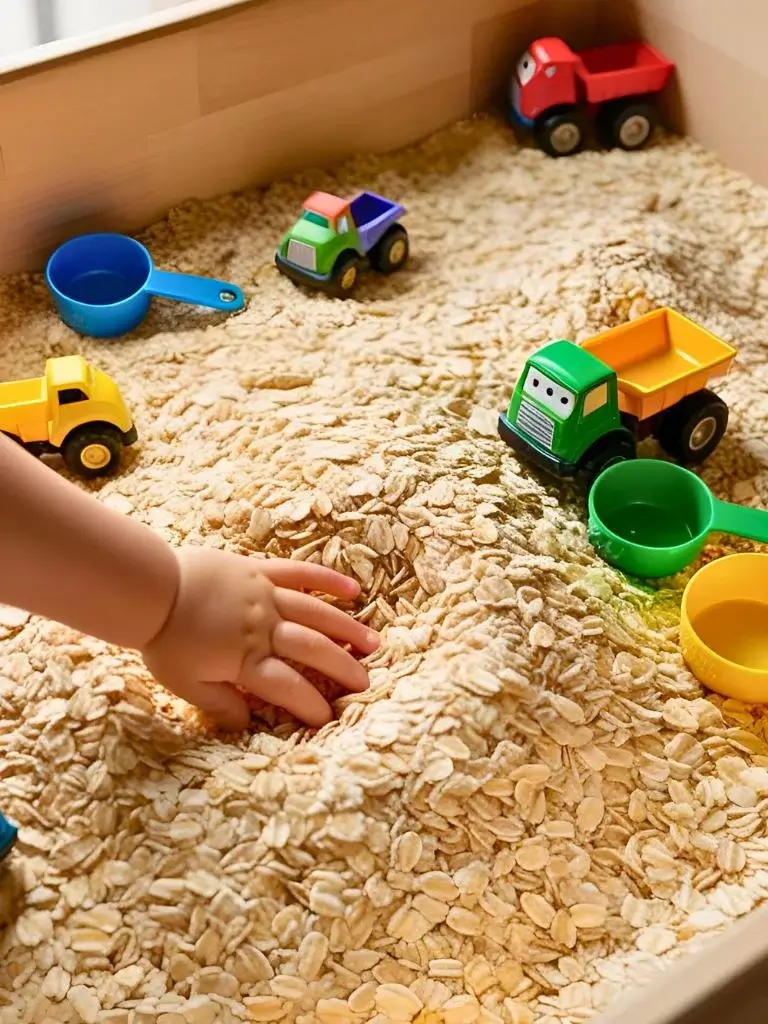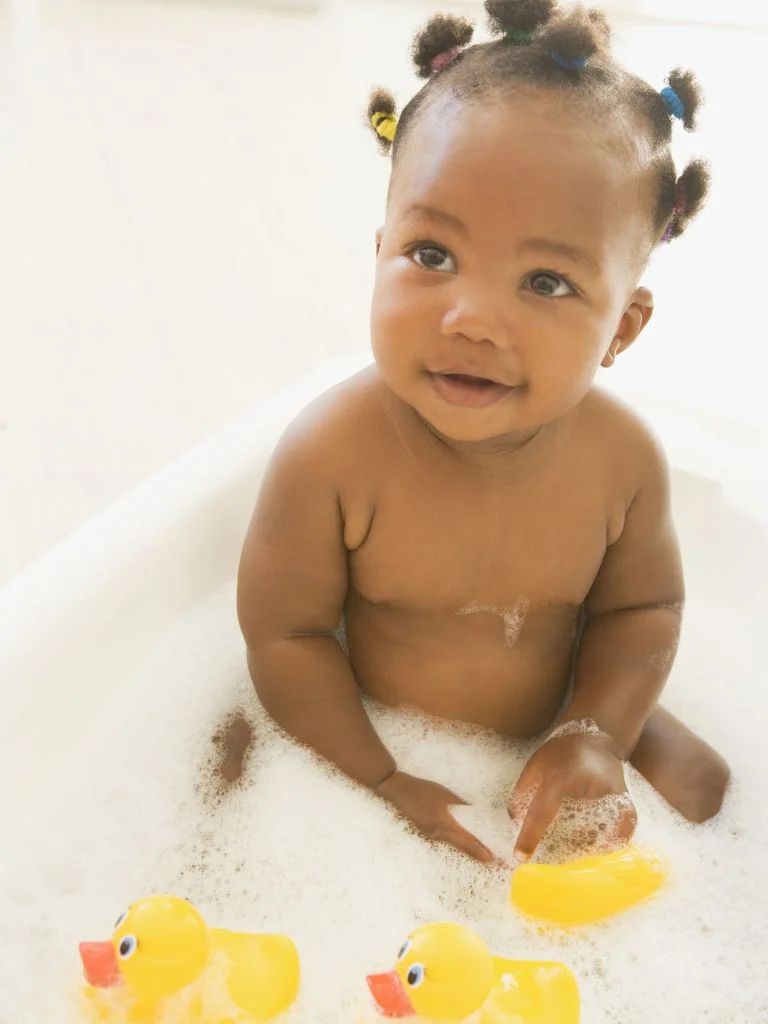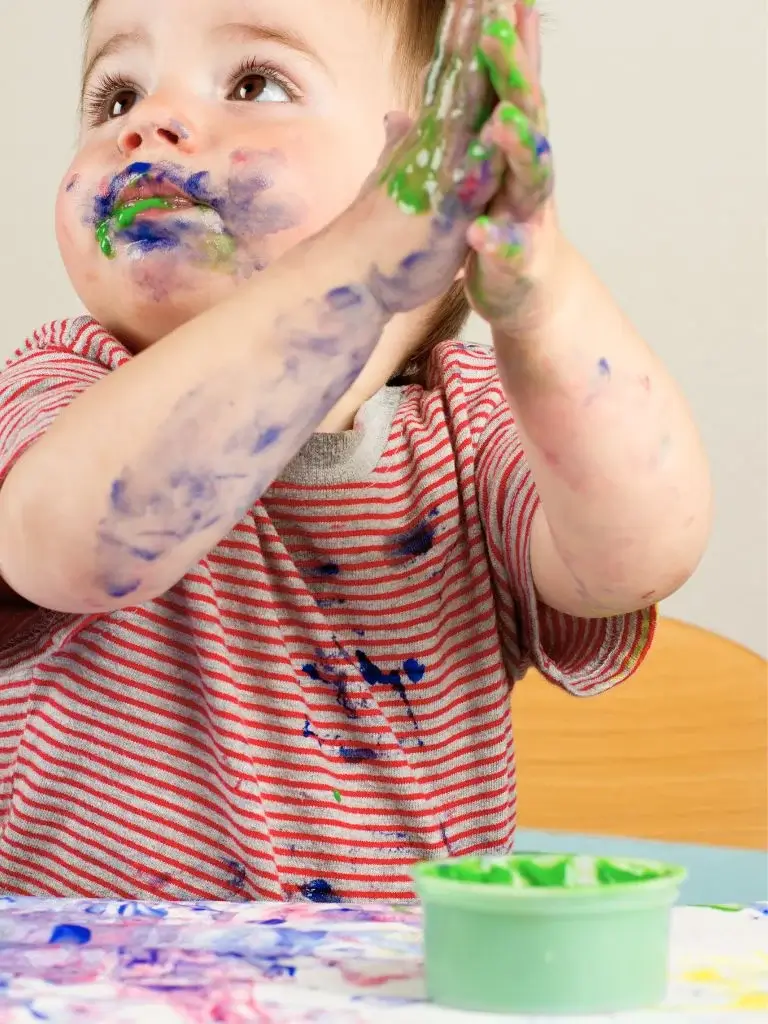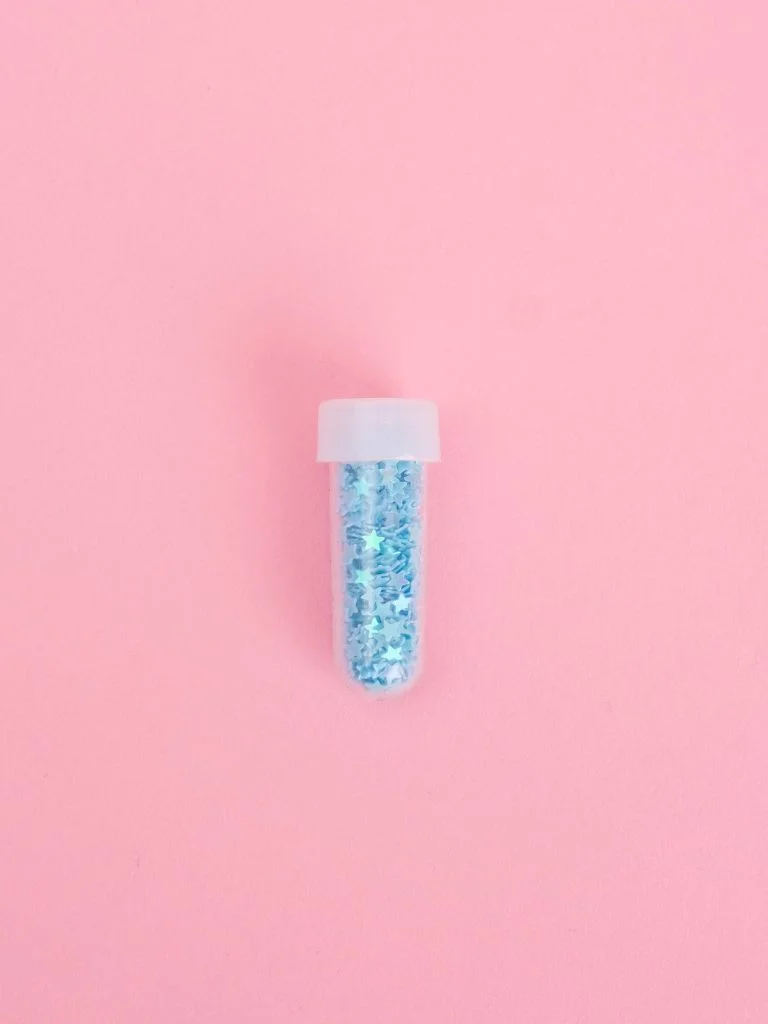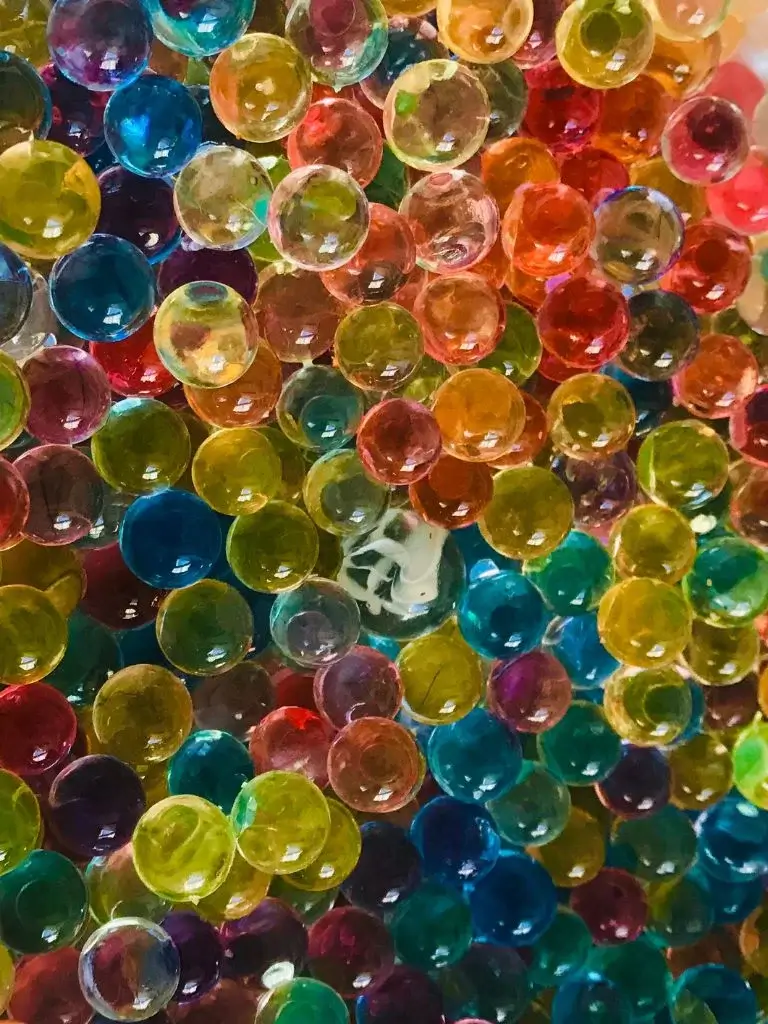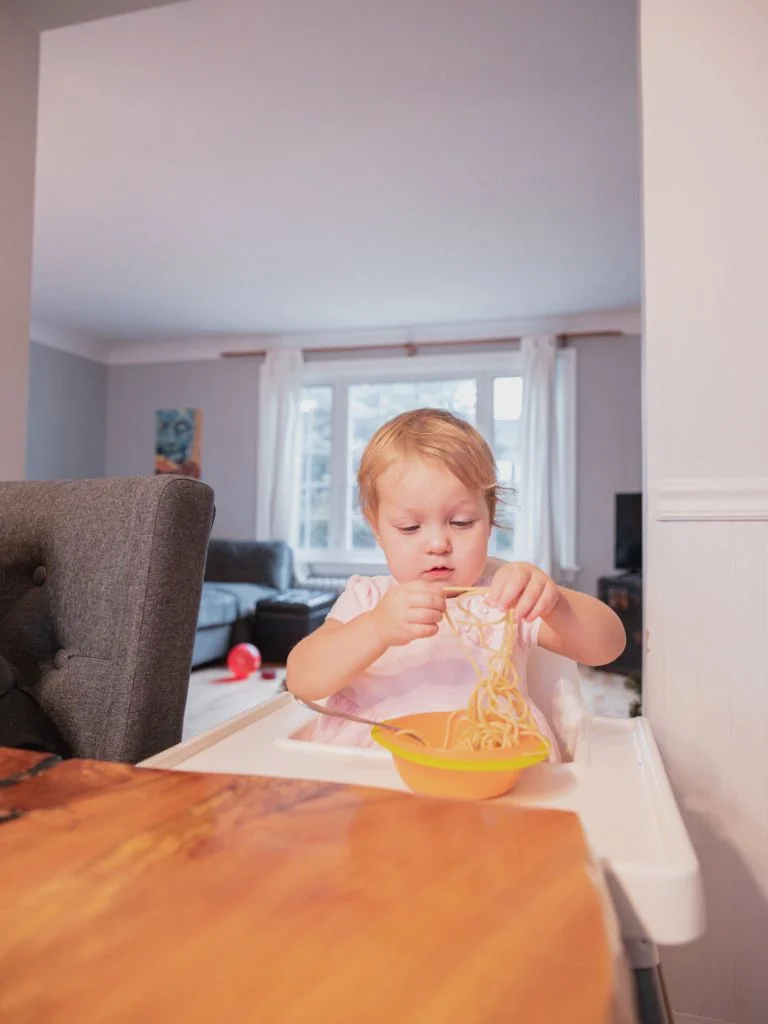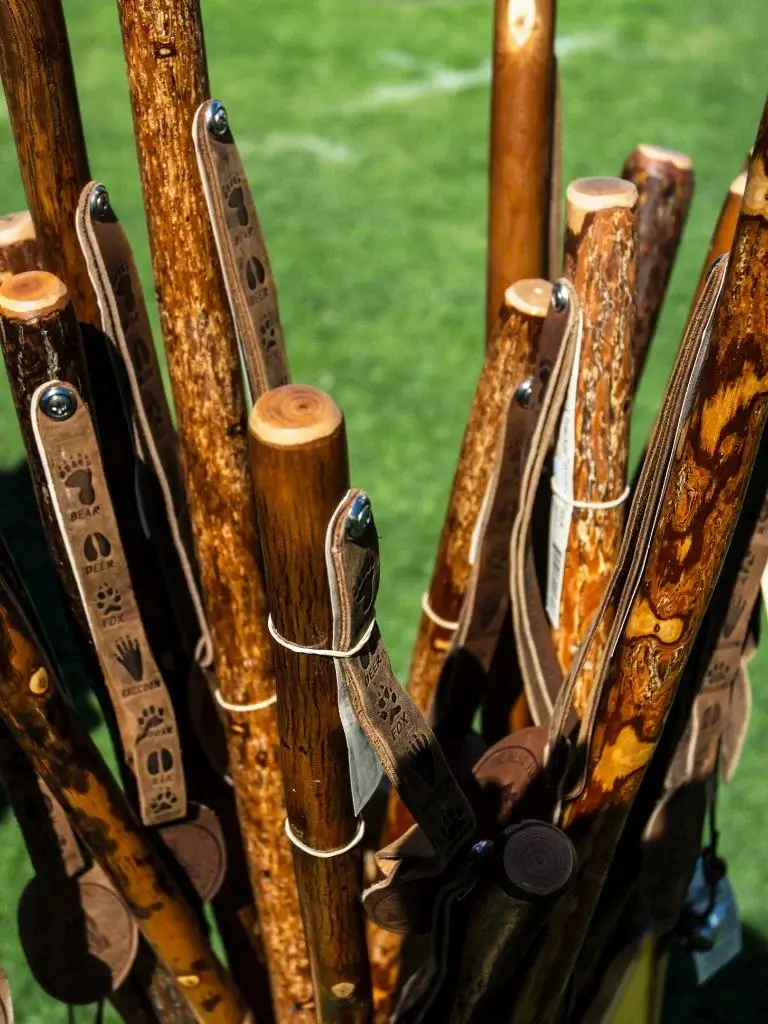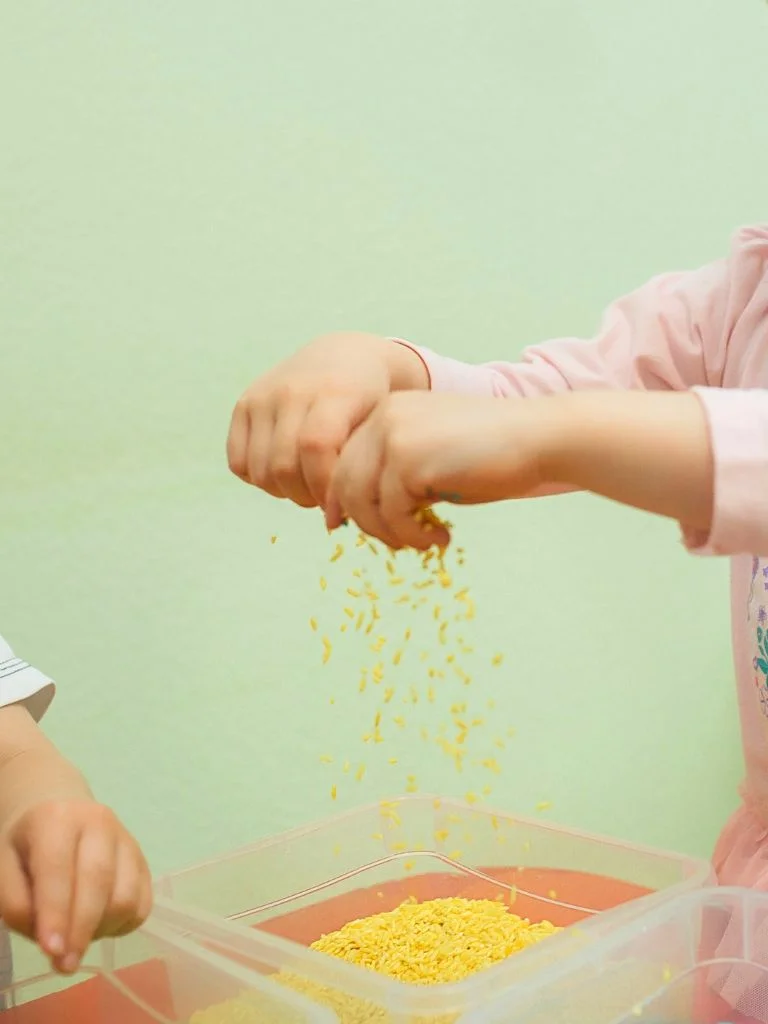Babies and toddlers are like little scientists, constantly experimenting and discovering through their senses. Sensory play gives them a safe, structured way to do that.
For babies, sensory play helps with brain development by stimulating their senses. It’s why they love touching different textures, listening to new sounds, or watching bright colors.
Toddlers, on the other hand, use sensory play to refine their motor skills, like picking up small objects or pouring and scooping. It also boosts their language skills as they learn to describe what they’re feeling, seeing, or hearing.
And here’s the best part: sensory play doesn’t have to be complicated or expensive. You can use everyday items from around the house, and it’s something you can do together. It’s not just good for your child—it’s good for you too, because it’s a chance to slow down and connect with your little one.
10 Sensory Play Ideas for Babies and Toddlers
I’ve included tips and tricks based on what worked for me, so you can feel confident trying them out:
1. Tummy Time Sensory Experience
For: Babies (0-6 months)
When my little one was just a few months old, I noticed she would get fussy during tummy time. But when I introduced a sensory mat with different textures, she started to enjoy it more. She loved reaching out to touch the soft fabrics and looking at herself in the mirror. It was amazing to see how engaged she became, and it helped her strengthen her neck and back muscles too.
How to Set It Up:
- Lay down a bright, colorful play mat with different textures—maybe some soft fabrics, crinkly papers, or even a baby-safe mirror.
- Place it on a soft surface like a blanket or yoga mat for comfort.
- Let your baby explore during tummy time, encouraging them to reach and touch.
This activity stimulates sight and touch while making tummy time more enjoyable. Plus, it’s great for developing focus and curiosity, as noted by Inspire My Play.
If your baby fusses, try lying down with them and making silly faces in the mirror. It’s a great bonding moment!
2. Edible Oat Sensory Bin
For: Babies and young toddlers (6-18 months)
I remember the first time I set up the oat bin for my baby. She was hesitant at first, but once she realized she could dig in and find her favorite toys, she was hooked.
It was so cute watching her little hands scoop and pour the oats.
How to Set It Up:
- Pour plain, unsweetened oats into a shallow tray (a baking sheet works great).
- Hide small, safe toys or objects (like plastic animals or spoons) inside the oats.
Oats are safe for mouthing, and this activity introduces object permanence while keeping little ones entertained. It’s perfect for babies who love to explore with their mouths.
Keep a vacuum nearby for quick cleanup, but don’t stress—the oats are easy to sweep up!
3. Bubble Foam Fun
For: Toddlers (12-36 months)
My toddler loves anything messy, and this was the perfect activity. We used it in the bath, and she had a blast squishing the foam between her toes and fingers. It’s also great for sensory-sensitive kids because it’s gentle and non-irritating.
How to Set It Up:
- Mix ½ cup of tear-free bubble bath with 1 cup of water in a large bowl.
- Use a hand mixer to whip it into fluffy foam (add food coloring for extra fun).
- Let your toddler squish, scoop, and play with the foam in a tray or the bath.
This activity is messy but easy to clean up, and it’s fantastic for tactile exploration. It also introduces cause and effect, like how the foam changes when squeezed.
Add plastic ocean animals to the foam for a fun “under the sea” theme!
4. Taste-Safe Paint
For: Toddlers (12-36 months)
Mixing natural yogurt with food coloring to make paint was a lifesaver when my toddler wanted to paint but I didn’t want to deal with messy, chemical-filled paints. She loved finger painting on paper, and I loved that it was safe if she decided to taste it.
How to Set It Up:
- Mix natural yogurt with a few drops of food coloring in small bowls.
- Let your toddler finger paint on paper or a tray.
- For extra fun, add some cookie cutters or stamps for them to press into the paint.
This activity encourages creativity and fine motor skills while being completely safe for little ones who might still be mouthing objects.
Use a plastic tablecloth for easy cleanup, and don’t worry if they eat a little—it’s just yogurt!
5. Sensory Bottle Discovery
For: Toddlers (18-36 months)
One afternoon, when my toddler was getting restless, I grabbed an empty water bottle and filled it with some colorful beads and glitter. She was mesmerized watching the sparkles swirl as she shook it! It’s now her go-to calm-down activity, and I love that it’s portable for outings.
How to Set It Up:
- Take a clean, empty plastic bottle with a secure lid.
- Fill it halfway with water, then add small, colorful beads, glitter, or sequins (safe, non-toxic items only).
- Seal the lid tightly with glue or tape to prevent spills, and let your toddler shake, roll, or tilt the bottle to watch the contents move.
Why It Works: This activity engages sight and sound, promoting visual tracking and focus. It’s also soothing, making it great for calming moments, as noted by Tinybeans.
Mom Tip: Try adding a drop of food coloring for a vibrant effect, and make a few bottles with different items for variety.
6. Water Beads
For: Toddlers (12-36 months)
Water beads are squishy and mesmerizing. We used them in resealable bags so my toddler could squish and roll them without making a mess. It’s a great way to introduce different textures in a safe, contained way.
How to Set It Up:
- Fill a resealable bag with non-toxic water beads (ensure they’re safe for children).
- Seal the bag tightly and let your toddler squish and roll it.
- For extra fun, add small toys or glitter to the bag.
Just make sure to supervise closely, as water beads can be a choking hazard if not contained.
Double-bag the beads for extra security, and never leave your child alone.
7. Spaghetti Sensory Play
For: Toddlers (12-36 months)
Cooked spaghetti is slimy and colorful—perfect for toddlers who love to explore textures. My toddler loved squishing it between her fingers and even pretending to “cook” with it.
How to Set It Up:
- Cook spaghetti, drain it, and divide it into bowls.
- Add a few drops of food coloring to each bowl and mix.
- Let your toddler play with the colorful spaghetti on a tray or in a sensory bin.
This activity is great for texture exploration and can lead to imaginative play. Plus, it’s easy to clean up—just toss the spaghetti in the trash!
8. DIY Rain Sticks
For: Toddlers (18-36 months)
Create your own rain sticks using cardboard tubes, rice, and tape. My toddler loved tilting them back and forth to hear the “rain.” It’s a simple way to introduce sounds and cause-and-effect.
How to Set It Up:
- Fill a cardboard tube (like a paper towel roll) with rice or small beans.
- Seal both ends with tape.
- Let your toddler tilt it to hear the sound.
This activity engages the sense of hearing and helps toddlers understand how their actions create sounds.
Decorate the tube with stickers or paint for a fun craft project first!
9. Rice Play
For: Babies and toddlers (6-36 months)
Similar to the oat bin, but with rice. We used rice in a tray with small toys and measuring cups. The soothing sound of the rice moving around was calming, and it was safer than sand for my little one who still liked to mouth things.
How to Set It Up:
- Pour rice into a shallow tray.
- Add small toys, measuring cups, or spoons.
- Let your child scoop, pour, and explore.
Rice is great for tactile play and introduces concepts like filling and emptying. Plus, it’s easy to clean up, per Tinybeans.
Use a sheet under the tray to catch any spills for quick cleanup.
10. Sensory Board
For: Babies and toddlers (6-36 months)
For a more permanent setup, create a sensory board. We attached different textured materials like fabric, sandpaper, and faux fur to a board. My baby loved reaching out to touch it, and my toddler used it for pretend play.
How to Set It Up:
- Attach various textured materials (fabric, sandpaper, faux fur, etc.) to a board.
- Add some bells or rattles for sound.
- Mount it on the wall or place it on the floor for easy access.
This is a great way to provide ongoing sensory stimulation. It’s also perfect for babies who are just starting to explore and toddlers who need a little extra engagement, according to Tinybeans.
Check the board regularly to ensure all items are securely attached.
Tips for Introducing Sensory Play
If your child is new to sensory play or seems hesitant, here are a few tips to make the experience positive:
- Begin with simple activities that involve one sense at a time. For example, let them touch different fabrics or listen to different sounds.
- Especially with younger children, always supervise to ensure safety. Some materials might be choking hazards or not suitable for mouthing.
- Let your child explore at their own pace. Don’t force them to touch something if they’re not ready.
- Sing songs, play games, or narrate what they’re doing to make it more engaging.
- Have a plan for cleanup, but don’t let the fear of mess stop you from trying new activities.
Conclusion:
Sensory play is not just play; it’s a vital part of your child’s development. These 10 ideas are just the beginning. Feel free to mix and match, or come up with your own based on what your child loves. Remember, the key is to have fun and let your child explore at their own pace.
I hope these ideas inspire you to create some magical sensory moments with your little one. Whether you’re a first-time mom or a seasoned pro, sensory play is a simple way to support your child’s growth while creating lasting memories. Happy playing!


